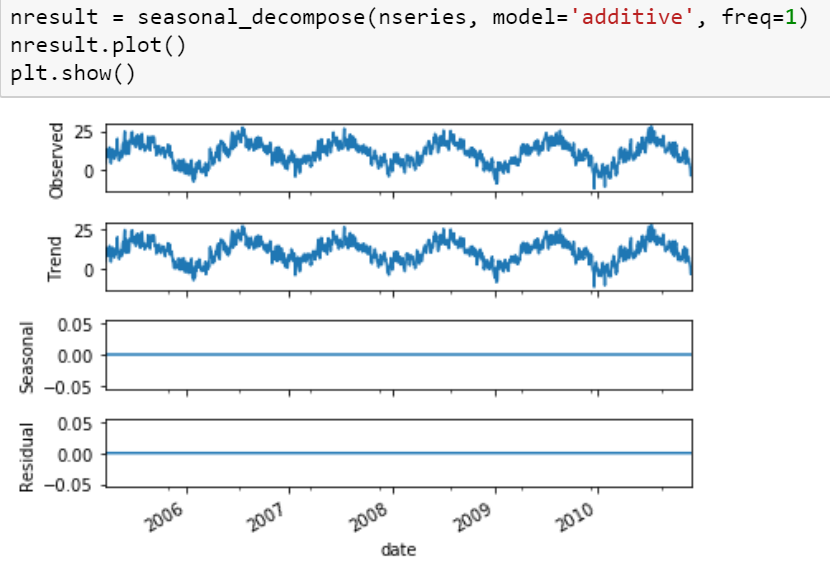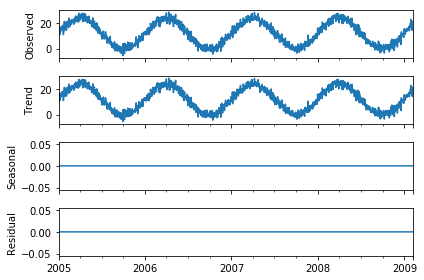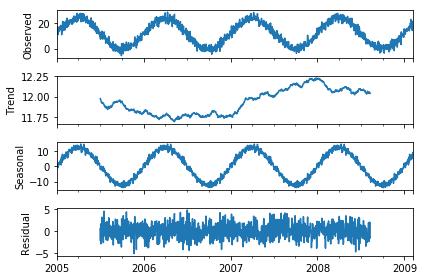I have a CSV file that contains the average temperature over almost 5 years. After decomposition using seasonal_decompose function from statsmodels.tsa.seasonal, I got the following results. Indeed, the results do not show any seasonal! However, I see a clear sin in the trend! I am wondering why is that and how can I correct it? Thank you.
nresult = seasonal_decompose(nseries, model='additive', freq=1)
nresult.plot()
plt.show()



